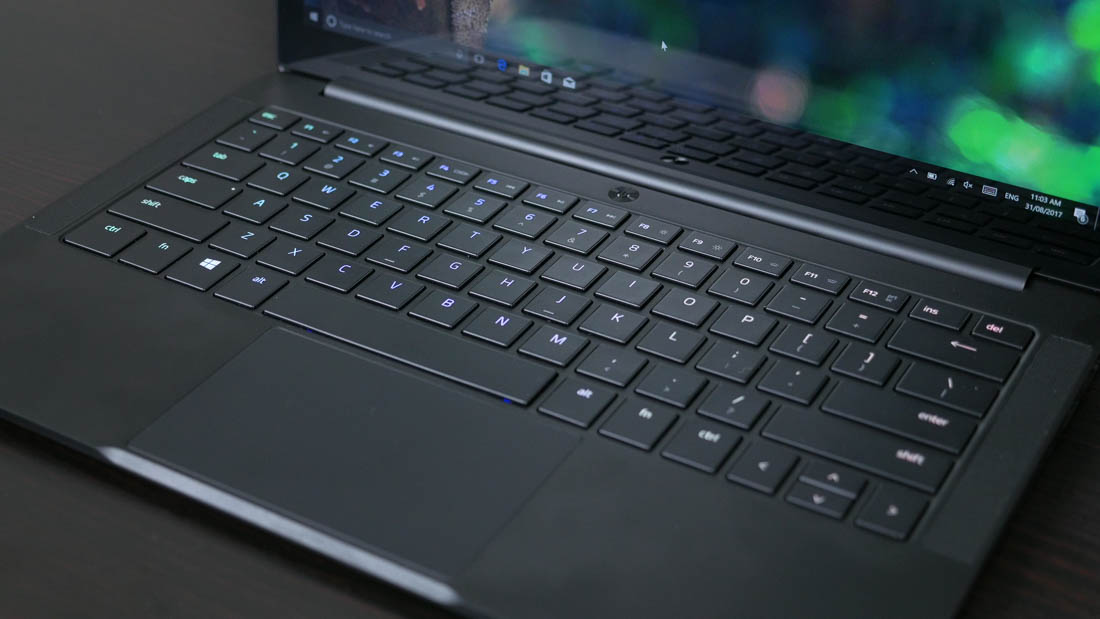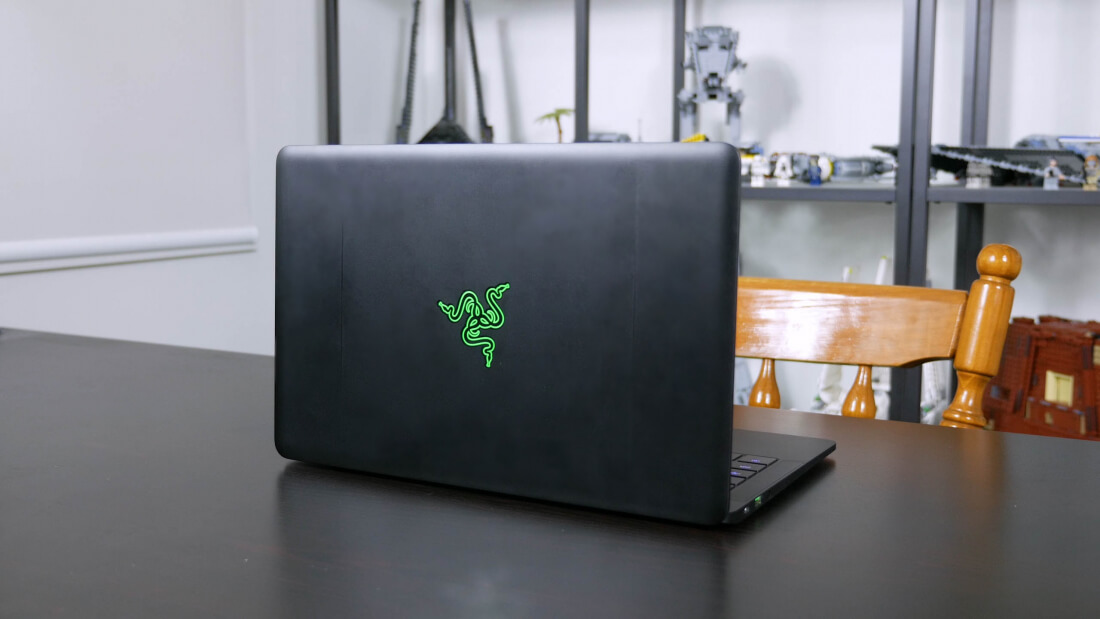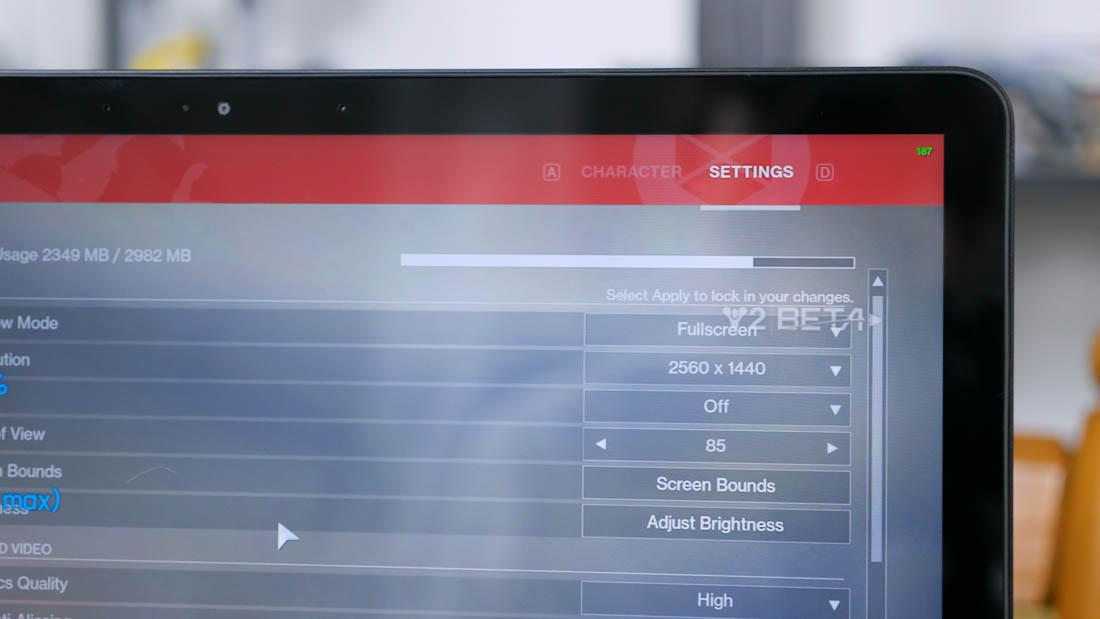Earlier this year we reviewed the previous version of the Razer Blade Stealth and loved it. It featured a great design, very portable form factor, and decent internal hardware. But despite succeeding in many ways, we were put off by the laptop's enormous bezels. No doubt many potential buyers agreed and instead settled for a device that offered more screen real estate in the same footprint.
Razer acknowledged this criticism and rather than waiting for a new Intel processor generation to debut a refreshed variant, the company has pushed out an updated Blade Stealth only months later.
You won't see massive improvements here, but there's enough small changes to push this laptop closer to perfection. So what are these changes?
The first obvious improvement addresses the main issue: bezel size. The new Blade Stealth is now available with a 13.3-inch display, instead of 12.5-inch, in the very same chassis. This means slimmer bezels and more screen real estate - 13 percent more to be precise - without sacrificing anything from a design perspective. The resolution of the entry-level model is higher as well, moving from 2560 x 1440 (234 PPI) up to 3200 x 1800 (276 PPI).
For now, the new Razer Blade Stealth with its 13.3-inch QHD+ display will be sold alongside top-end 12.5-inch 4K variants from the previous generation, at least while there is still inventory available. However, it seems like Razer is phasing out these older large-bezel models, even though they feature a higher resolution display, in favor of a single 13.3-inch display option. And phasing out this previous model makes perfect sense, as I can't think of a reason why you'd want a slightly higher resolution when the screen is smaller and bezels are larger.
The new Blade Stealth also swaps out the decent Synaptics touchpad in previous models for a superior Precision-certified unit. This means the trackpad is fully compatible with Windows 10 gestures, and supports basically the best and most accurate tracking experience available in modern Windows machines. The new trackpad is seriously responsive and undoubtedly provides an excellent experience in all facets. The glass finish also feels superb.
The other notable change comes to the configuration options available. Razer has culled all models with less than 16GB of RAM, a Core i7 CPU and a 256GB SSD. The $900 model with a Core i5 CPU, 8GB of RAM, 128GB SSD, and a non-touch display is therefore no longer available.
The new entry-level model comes equipped with a Core i7-7500U, 16GB of RAM and a 256GB SSD, and will set you back $1,399. Unfortunately, this is a $150 price hike on the equivalent model from the previous generation. Models with 512GB and 1TB of storage are $1,599 and $1,999 respectively; the same price as the previous-gen top-end 4K models.
Oh and there's a new gunmetal grey model available, which swaps out not just the matte black finish, but the acid green Razer logo for a more understated grey finish with black logo. I received a black model to review, and after seeing photos I think I still prefer this variant to the gunmetal, though it is nice to have a new color option.
Design-wise, the new Blade Stealth is basically identical to its predecessor aside from slimmer bezels. You're getting the same outstanding machined aluminium unibody, which looks premium and is both slim and light. If you love previous Razer builds, love the MacBook Pro style of laptop, then you'll love the Blade Stealth.
The keyboard is also the same, with great tactile feedback and individually-customizable RGB lighting; it's a breeze to type on. I/O ports? Also the same, with Thunderbolt 3, USB 3.0 and a 3.5mm headphone jack on the left, as well as a full-sized HDMI 2.0a port and another USB 3.0 port on the right.
So let's go back and talk a little further about the Blade Stealth's new display: a 13.3-inch IGZO LCD with a resolution of 3200 x 1800. The smaller bezels make a significant difference to the aesthetics of the laptop. You're not getting Dell XPS-like no-bezel frames, however I think Razer's screen to bezel ratio used here is now perfectly acceptable.
Looking at display performance was tricky on the Blade Stealth, as Razer seems to have implemented a dynamic contrast and brightness feature that cannot be disabled. For this reason I won't give exact numbers for how the display performs, because performance varies significantly depending on the amount of dark colors on the screen. It also makes the Blade Stealth largely unsuitable for color accurate work.
However I will say that brightness is very good, reaching a peak of over 400 nits when displaying all white. Contrast, as best determined in static conditions, is around the same as the previous Blade Stealth's contrast of 1100:1. Color temperature is good as well, falling around 6700K on average, though gamma is significantly impacted by dynamic contrast and grayscale dE2000 performance changes dynamically as well.
As for colors, the IGZO panel, glossy finish and low gap between glass and display leads to fantastic viewing angles and colors that pop. For casual use, the dynamic contrast feature doesn't detract from how good the display looks in general. Color results appear to fall in an average dE2000 range of 3.0 to 5.0, which wouldn't be suitable for color accurate work even if the dynamic contrast feature could be disabled. The display also covers 97.6% of the sRGB spectrum.
Compared to the previous Blade Stealth with its 1440p display, the refreshed model's color performance is roughly the same, so there's no degradation from the increased display size or resolution. In fact, the brightness is better from this new display, which helps when using the laptop outdoors.
Oh, and the display is a touchscreen, too, which I don't find myself using often on a laptop, though it's a nice feature to have on the occasion touch inputs are better than mouse and keyboard.






